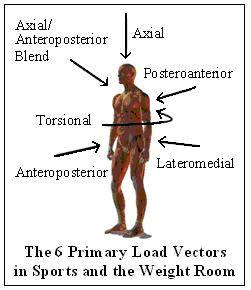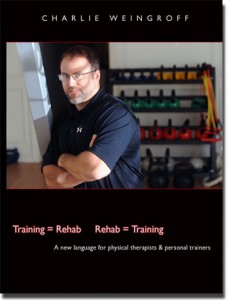If you’re an intelligent strength coach, then chances are you can relate to this article. In training athletes over the past several years, I’ve been very surprised by some of the stupid things that coaches do with their athletes. I’m also constantly amazed at things that former strength coaches have done with some of the athletes I’ve trained. Here are ten stupid things that coaches and strength coaches do with their athletes:
1. Exercise as Punishment
Strength coaches and coaches are supposed to have their programs planned ahead of time. There are many effective ways to plan and periodize programs, and a good coach prescribes the optimal amount of volume and intensity to yield the specific training effect. If on any given day a coach decides to punish his or her athletes with copious amounts of push ups, up-downs, stadiums, or jogging, then that coach doesn’t know what in the hell he or she is doing. If the coach has these “punishments” strategically built into the session in advance, then that’s a little bit better than just “winging it,” but here are three reasons why this strategy is detrimental to the athlete:
- You don’t want athletes fearing exercise. You want them to enjoy training. Punishing them in this manner is not helpful.
- Second, performing excessive volume on any particular movement pattern can invoke too much fatigue and initiate the overreaching/overtraining process, or lead to stagnation or injury. At the very least it will hamper the workouts planned on the following couple of days.
- Endurance work interferes with power (Hakkinen et al. 2002). There’s a fine line between optimal stamina/power endurance/work capacity and maximum power production.
I’ve heard of some coaches who say, “I will break my athletes.” Athletes aren’t horses. I prefer to build my athletes up so they don’t break! Plan out the appropriate amount of stimulus that will spark positive adaptation, and discipline athletes in ways that don’t involve bringing more fatigue to the plate.
2. Twice-a-Day Workouts to Kick-Off the Season
Over the summer or during off-seasons, many athletes get lazy and sit around playing video games. In fact, many athletes don’t train at all during this time. Their coordination degrades, their tissues decrease in strength, and their levels of power, strength, and endurance plummet. As long as you gradually build them back up, athletes will quickly adapt to previous levels of fitness and structural integrity. Think of it as rehabilitation – you gradually increase the stimuli over the course of a month or so and voila! Your athletes are all healthy, strong and fit.
Taking an athlete who hasn’t trained all summer long and starting them off with 2 (I’ve even heard of 3x/days) strenuous workouts per day is absolutely asinine! Doing this for a couple of weeks is a sure-fire way to initiate overreaching, promote soft-tissue injuries, and delay strength and power gains. Some coaches feel that soreness is a prerequisite for results, which is a load of bull. You can certainly have your athletes train two or three times per day, as long as you take a couple of weeks to build up to these levels. Think of Milo of Crotona and gradually progress.

I’ve heard coaches say, “I have to shock them into adaptation.” I’ve had very much success with athletes by never “shocking” their bodies too much at one setting, and rarely getting them sore.
When I introduce a new exercise, I’m very conservative and I don’t let them push it too hard. I see how their bodies react and adjust accordingly. This is especially important for exercises known to create a lot of soreness such as heavy lunges, Bulgarian squats, deadlifts, and ab wheel rollouts. My goal is to never get my athletes too sore so that every workout can be productive, and so they never get overly-tight and bound-up.
3. Strength Training in the Early Morning
During sleep, compressive loading on the intervertebral discs is reduced, which allows the discs to absorb more fluid and increase in volume (Urban and McMullin 1988). During the day, this extra water is expelled as normal daily spinal loading and movement ensues. In the early morning, intradiscal pressure is 240% higher than prior to going to bed (Wilke et al. 1999). Furthermore, bending stresses are increased at the discs by 300% and at the ligaments of the neural arch by 80% due to hydration and absence of creep (Adams et al. 1987).
As the day goes on, discs bulge more, become stiffer in compression, become more flexible in bending, becomes more elastic, have a higher affinity for water, and the likelihood of prolapse becomes more difficult (Adams et al. 1990).
Many strength coaches have their athletes training at 6:00 a.m, doing back squats, deadlifts, and sit ups. This is probably one hour after they athletes have risen from bed. The chances of sudden spinal disc or ligament injury or even subtle disc damage is greatly increased under this hyper-hydrated state. Either train later in the day, or create “low-back friendly routines” to decrease the risk of injury. If you can’t find a way to train at least 2-3 hours after the athletes have awakened, then here are some ways to decrease the likelihood of spinal injury during early-morning training:
- prolonged warm-ups – spinal muscular contractions cause the majority of compressive loading, and the longer you can prolong heavy lifting while moving around, the more water will be pumped out of the discs so safer levels of hydration are reached
- front squats over back squats – although the compressive load is probably similar between the two lifts, as front squats involve higher anterior core contractions while back squats involve heavier loads and higher posterior core contractions, back squats involve greater forward trunk lean and encourage more forward bending which imposes higher shear and bending moments on the spine
- speed deadlifts or power cleans over deadlifts – although compressive loading may be similar in these movements due to similar core muscular contractions and higher speeds of execution, deadlifts encourage more forward bending which imposes higher shear and bending moments on the spine
- ditch the heavy bilateral lower body lifts – instead opt for Bulgarian split squats, reverse lunges, high step ups, and single leg RDL’s rather than heavy squats and deadlifts – you probably get 75% of the spinal loading due to less erector spinae contraction and lighter external loads
- ditch the core training, or at least train the core at the end of the workout – compression, torsion, shear, and bending stresses are highly dangerous when the discs are hyper-hydrated, and even a presumably safe core exercise is not safe under these conditions
4. No Concern for Strength
I’ve heard many coaches say, “I don’t care about strength.” How many articles in support of the positive impact of strength in relation to power production need to be published before some of these idiotic coaches realize the importance of strength as it pertains to athletic performance? There is a huge relationship between strength, muscle cross-sectional area (CSA), myosin heavy chain (MHC) isoform composition, and rate of force development (RFD)(Tipton 2006).
If you are a coach and you don’t acknowledge the role of strength in improved athletic performance, then shame on you! Your athletes deserve much better.
5. Over-Focus on Strength
Many coaches are at the opposite end of the spectrum. Strength is all they care about, to the point where they stop doing “athletic things” in training and focus solely on heavy, slow lifts. If all you ever do is slow training your body will adapt by getting better at producing force over a prolonged interval. You want to be able to produce tremendous force over rapid or prolonged intervals, and there’s an optimal way to achieve this.
Strength training works best when trained concurrently along with sprints, plyometrics, ballistics, and agility work. Combined training is superior for the production of power in comparison to resistance training alone (Kostzamanidis et al. 2005).
6. No Auto-Regulation
Auto-regulatory training is vital to maximum performance. Recently it has been shown to be more effective than linear periodization (Mann et al. 2010). It can be used within any type of periodization system, and it simply involves paying attention to biofeedback, listening to what the body is saying, and adjusting accordingly. While I don’t like “cookie-cutter programs,” I am in support of flexible templates.
A good coach can create a great plan on paper, but the best coaches know how to stray from the plan when necessary. If the athlete is overly-sore, back off and train hard the following day. If the athlete didn’t sleep well or has a lot of stress in his or her life, take it easy. If the athlete is feeling great and is all jacked up, smoking the heaviest lift you planned for the day like it was cupcakes, then go heavier and try to set a new PR. Align the stimulus with their physiologic state and watch your athletes adapt more proficiently.
7. No Assessment/Screening/Evaluation
Many coaches have never learned how to assess joint range of motion or fundamental movement patterns. This is very sad, as many times all you have to do is improve flexibility in a particular direction in the hips, spine, ankles, or shoulders and it completely changes an athlete’s form on big lifts and cleans up poor movement patterns when running, jumping, throwing, and/or swinging.
Good form involves proper mobility, stability, and motor control. Any dysfunction in these three areas will reveal itself in movement. The quicker you can pinpoint this dysfunction and eliminate it, the faster your athletes will progress.
There are many ways to assess and screen athletes, but at the very least you should know what normal ranges of motion are in the ankles, hips, spine, shoulders, and neck. You should know what good form looks like in an overhead squat pattern, an active straight leg raise pattern, a push up, static lunge, glute bridge, standing knee raise, db overhead press, and bird dog.
Good coaches evaluate performance measures regularly. They know whether their athletes have gained or lost range of motion, coordination, strength, power, speed, and endurance. Testing can be worked its way into the program without interfering with the schedule. Evaluation is often what separates great coaches from good coaches.
Depending on the sport, you may want to test your athletes’:
- breathing patterns
- posture
- joint ROM’s
- fundamental movement patterns
- core stability endurance from all directions
- vertical jump
- broad jump
- 10-meter sprint
- 40-yard dash
- backward medball toss
- t-test
- medball shotput
- max bench
- max squat
- max deadlift, and
- max chin up
One question I often ask trainers and coaches is, “How do you know your athletes are getting better?” Think about it.
8. No Knowledge of Directional Load Vectors
In sports we move in predictable directions. We jump, sprint, cut, backpedal, and rotate. These same directions need to be trained in the weightroom. Many times I’ll look at a coach’s program and all I’ll see is heavy sagittal plane lifts involving axial, anteroposterior, and posteroanterior vectors.
The best coaches know how to get their athletes strong, powerful, and fast in all directions, which requires a good blend of strength, power, and reactive training from the various vectors. Axial, anteroposterior, posteroanterior, mediolateral, lateromedial, and torsional vectors should be trained in order to maximize athletic performance.

9. Poor Instincts About Form
There are three types of strength coaches:
- Those who allow way too sloppy of form and expose their athletes to way too much risk at the expense of “going heavier”
- Those who are way too conservative and think that every repetition should look like a robot is performing the lift
- Those who know the perfect balance
The best strength coaches get their athletes very strong while using good form. I’d guess that 60% of coaches are too sloppy, 20% of coaches are too strict, and 20% have “the eye” for great form while simultaneously producing strong specimens.
10. No Specialization and Individualization
Your job as a coach is also to analyze the individual’s strengths and weaknesses in order to bring up their weak link, and to analyze their sport and position in order to create specific exercises and methods according to their needs.
Routines shouldn’t be the same across the board. Every aspect of the routine should differ from one individual to the next. Each player should have their own warm-up consisting of individualized SMR, stretches, and mobility/activation drills. Each player should have their own power program consisting of sprints, plyos/ballistics, agility drills, and explosive lifts. Each player should have their own strength program consisting of heavy lifts from the various movement patterns and accessory movements for structural balance.
No two athletes are the same in terms of anatomy, physiology, anthropometry, and psychology. Some players need extra mobility or stability work in a certain joint. Some players distribute stress evenly during lifting and can train heavy more frequently. Some just don’t recover fast and need more time between heavy or explosive bouts.
Your role as a coach is to ask the athletes questions and learn about their responses to various acute training variables such as exercise selection, frequency, volume, and intensity. In time a good coach will adjust these variables depending on verbal and non-verbal feedback and performance indicators.
If the coach is training a large volume of athletes and doesn’t have many assistants, then a general system can work well if considerable thought and detail is put into it, but it’s still not optimal. A general system may work best for the given situation, but a program could always be better if more individualization was developed and more assistance was provided from other specialists.
Conclusion
I hope that coaches learned a thing or two from this article. While I’m proud of all the coaches, strength coaches, and personal trainers out there who care about and believe in their athletes enough to push them hard day in and day out, we should always strive to inject scientific principles into our programming and train in an optimal manner so our athletes achieve the best results possible.








